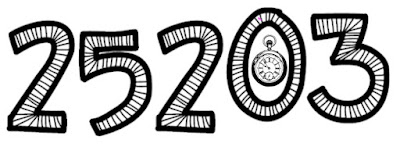I'm currently reading Marianne Faithfull's
memories, dreams and reflections after accidentally stumbling across it on
The Internet Archive while looking for the similarly named book by Carl Jung. I was able to borrow it through the
Open Library for a two week period. Her autobiography titled
Faithfull is also available there. Earlier I had been looking for James Bacque's
Other Losses and not only found it on the Archive but was able to download an unencrypted copy rather than having to borrow it. I also discovered that a great many old 78 records have been digitised and placed on
The Great 78 Project, also a part of the archive. So there's certainly a lot to discover.
Anyway, Marianne Faithfull's book is proving an interesting read. I know some of the characters who she interacted with: Allen Ginsberg, William Burroughs and many of her friends in the music business. Others however, I knew little or nothing about such as Caroline Blackwood and Lucian Freud. Here is a quote from the Wikipedia article about her:
Lady Caroline Maureen Hamilton-Temple-Blackwood (16 July 1931 – 14 February 1996) was a writer, and the eldest child of the 4th Marquess of Dufferin and Ava and the brewery heiress Maureen Guinness. A well-known figure in the literary world through her journalism and her novels, Caroline Blackwood was equally well known for her high-profile marriages, first to the artist Lucian Freud, then to the composer Israel Citkowitz and finally to the poet Robert Lowell, who described her as "a mermaid who dines upon the bones of her winded lovers". Her novels are known for their wit and intelligence, and one in particular is scathingly autobiographical in describing her unhappy childhood.
Lucian Freud, Girl in Bed, 1952
Regarding the above photo: Robert Lowell (in 1977) fled London to return to his former wife Elizabeth Hardwick. He died from a heart attack in the backseat of a taxi, clutching
Girl in Bed, Lucian Freud's haunting portrait of Caroline (as related by Marianne Faithfull). A
biography has written titled
Dangerous Muse: The Life of Lady Caroline Blackwood by Nancy Schoenberger. Of Lucian Freud, the
Wikipedia entry begins:
Lucian Michael Freud (8 December 1922 – 20 July 2011) was a British painter and draftsman, specialising in figurative art, and is known as one of the foremost 20th-century portraitists.
He was born in Berlin, the son of Jewish architect Ernst L. Freud and the grandson of Sigmund Freud. His family moved to Britain in 1933 to escape the rise of Nazism. From 1942-43 he attended Goldsmiths College, London. He enlisted in the Merchant Navy during the Second World War.
His early career as a painter was influenced by surrealism, but by the early 1950s his often stark and alienated paintings tended towards realism. Freud was an intensely private and guarded man, and his paintings, completed over a 60-year career, are mostly of friends and family. They are generally sombre and thickly impastoed, often set in unsettling interiors and urban landscapes. The works are noted for their psychological penetration and often discomforting examination of the relationship between artist and model. Freud worked from life studies, and was known for asking for extended and punishing sittings from his models.
Below is a photo of the two of them together:
There are 283 paintings by Lucian Freud on view at
https://www.wikiart.org. It is an impressive oeuvre. Here is a self-portrait from the collection:
This excerpt from the
Wikipedia article is interesting:
Freud painted from life, and usually spent a great deal of time with each subject, demanding the model's presence even while working on the background of the portrait. A nude completed in 2007 required sixteen months of work, with the model posing all but four evenings during that time; with each session averaging five hours, the painting took approximately 2,400 hours to complete. A rapport with his models was necessary, and while at work, Freud was characterised as "an outstanding raconteur and mimic". Regarding the difficulty in deciding when a painting is completed, Freud said that "he feels he's finished when he gets the impression he's working on somebody else's painting". Paintings were divided into day paintings done in natural light and night paintings done under artificial light, and the sessions, and lighting, were never mixed.
An artist friend of Lucian, Francis Bacon, is mentioned in the
https://www.wikiart.org site but unfortunately no artwork is shown due to a copyright infringement notice. However, even though he died in April of 1992, he has a dedicated
website where his paintings can be reviewed. I must say I was unimpressed by what I viewed there.































